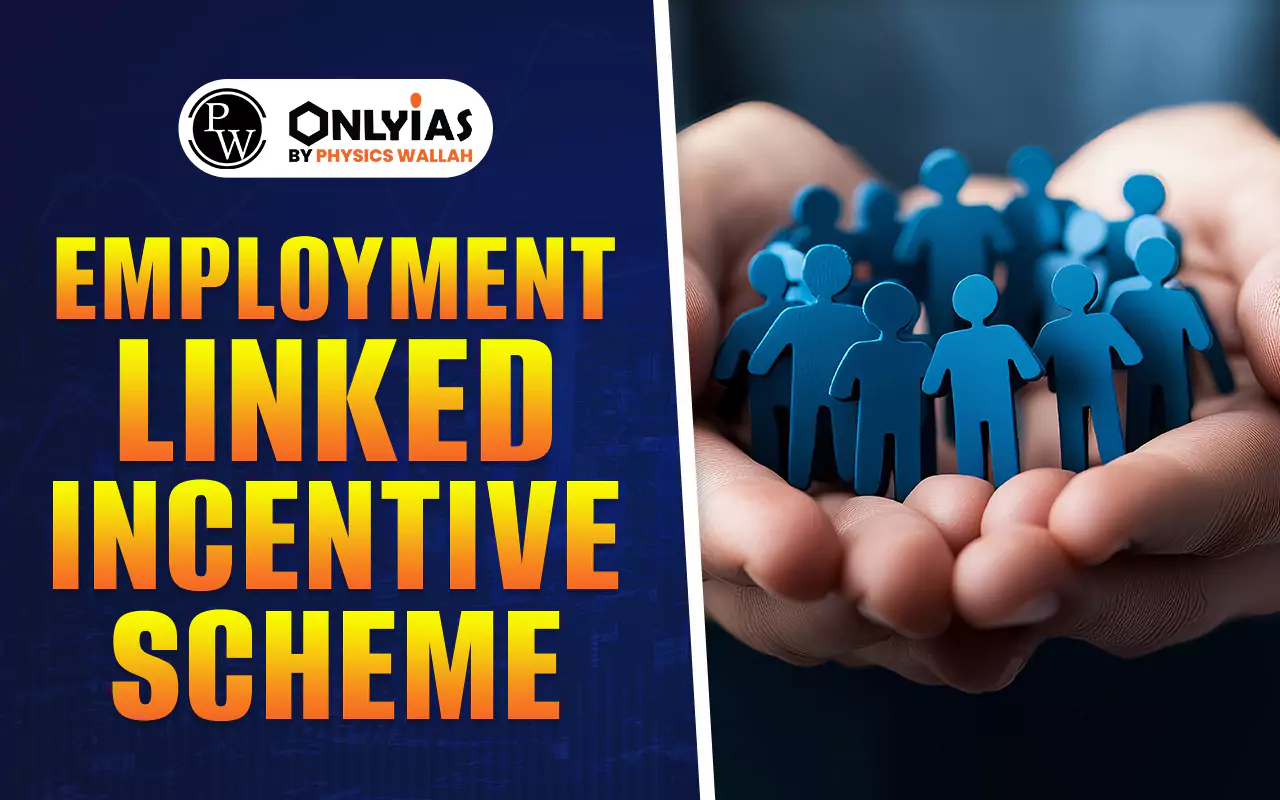Know all about the Employment Linked Incentive Scheme (ELI): how to apply, eligibility, benefits for first-time EPFO-registered employees, ₹1,000–₹3,000/month incentives for employers, and its role in generating over 3.5 crore jobs in India.

Employment Linked Incentive Scheme (ELI Scheme) is a landmark initiative approved by the Union Cabinet under the leadership of Prime Minister Shri Narendra Modi. Announced as a major employment-generating reform in the Union Budget 2024–25, the scheme is designed to enhance job creation, employability, and social security across India, with a particular emphasis on the manufacturing sector.
The Employment Linked Incentive Scheme not only rewards first-time employees but also provides financial incentives to employers hiring additional workers.
List Of International National Days 2025 Month-Wise List
The Employment Linked Incentive Scheme is a centrally sponsored scheme that seeks to provide incentives to employers for generating new employment and to first-time employees for entering the formal workforce. With a financial outlay of ₹99,446 crore, the scheme aims to create more than 3.5 crore jobs over a period of two years, from August 1, 2025, to July 31, 2027.
It is part of a broader employment, skilling, and entrepreneurship package targeting 4.1 crore youth, with a total budget allocation of ₹2 lakh crore. The ELI Scheme promotes job formalisation and improves access to social security by ensuring EPFO registration and Aadhar-based identification.
| Employment Linked Incentive Scheme Overview | |
| Component | Details |
| Scheme Name | Employment Linked Incentive Scheme (ELI Scheme) |
| Announced In | Union Budget 2024–25 |
| Approved By | Union Cabinet chaired by Prime Minister Narendra Modi |
| Total Outlay | ₹99,446 Crore |
| Implementation Period | August 1, 2025 – July 31, 2027 |
| Target Job Creation | Over 3.5 Crore Jobs |
| Target First-Time Employees | 1.92 Crore Beneficiaries |
| Eligibility (Employees) | EPFO-registered, salary up to ₹1 Lakh/month, Aadhaar-seeded UAN |
| Eligibility (Employers) | EPFO-registered establishments, hire 2–5 additional employees, sustained for ≥6 months |
| Scheme Structure | Two Parts: Part A (Employees), Part B (Employers) |
| Part A – Employees’ Benefit | One-month EPF wage up to ₹15,000 in two instalments via DBT |
| Part A – Payment Conditions | 1st installment after 6 months; 2nd after 12 months + completion of financial literacy program |
| Part B – Employers’ Incentive | Up to ₹3,000/month per additional employee for 2 years (4 years for the manufacturing sector) |
| EPF Wage-Based Incentives | – Up to ₹10,000: ₹1,000/month
– ₹10,001–₹20,000: ₹2,000/month – ₹20,001–₹1,00,000: ₹3,000/month |
| Disbursement Mechanism | – Employees: Direct Benefit Transfer (DBT) via Aadhaar-Based Payment System (ABPS)
– Employers: PAN-linked account transfers |
| Special Focus | Manufacturing sector – Extended incentives for 3rd and 4th years |
| Associated Benefits | Formalisation of workforce, increased social security coverage, and financial literacy |
| Part of PM Package | Included in PM’s 5-scheme package for 4.1 Crore youth with total ₹2 Lakh Crore allocation |
The ELI Scheme primarily seeks to:
Some of the major Employment Linked Incentive Scheme features include:
The Employment Linked Incentive Scheme is a two-part structure, tailored to address both supply and demand in the labour market and to target different beneficiaries:
Estimated beneficiaries under Part A: 1.92 crore first-time employees.
Estimated employment generated under Part B: 2.60 crore additional jobs.
To be eligible for the Employment Linked Incentive Scheme, the following conditions must be met:
To apply for the Employment Linked Incentive Scheme, eligible employers and first-time employees must:
The payment mechanism is digital:
The ELI Scheme is balanced to make a lasting impact by:
While industry experts have praised the scheme as a bold step toward boosting job creation, some trade unions have criticised it. Organisations like the Centre of Indian Trade Unions (CITU) have raised concerns, alleging that the scheme may disproportionately benefit employers at the cost of public funds. Nonetheless, government officials have repeated that the scheme’s intent is youth empowerment and economic strengthening.
The Employment Linked Incentive Scheme stands as a pivotal strategy to address India’s employment challenges. By providing dual incentives to both first-time employees and employers, the scheme is expected to accelerate job creation, foster formal workforce participation, and lay the foundation for a skilled, secure, and future-ready labor market. With its robust design and inclusive focus, the ELI Scheme is more than just a policy—it’s a blueprint for India’s economic and social transformation.
Ready to boost your UPSC 2025 preparation? Join PW’s UPSC online courses today!
It is a government initiative offering financial support to both employers and first-time employees to boost formal job creation.
Employment-linked incentive schemes are government programs designed to promote job creation by rewarding employers and supporting new workers.
First-time EPFO-registered employees earning up to ₹1 lakh/month and employers hiring additional staff as per EPFO norms are eligible for the ELI Scheme.
Employees must register with EPFO and link Aadhaar; employers must maintain required additional hires and apply via EPFO-linked portals for benefits.
Employers get ₹1,000–₹3,000/month per new hire, and employees get up to ₹15,000 in two installments after sustained employment and a financial literacy program.
Key features include support for first-time employees, extended employer incentives in manufacturing, DBT payments, and EPFO-based eligibility tracking.

<div class="new-fform">
</div>